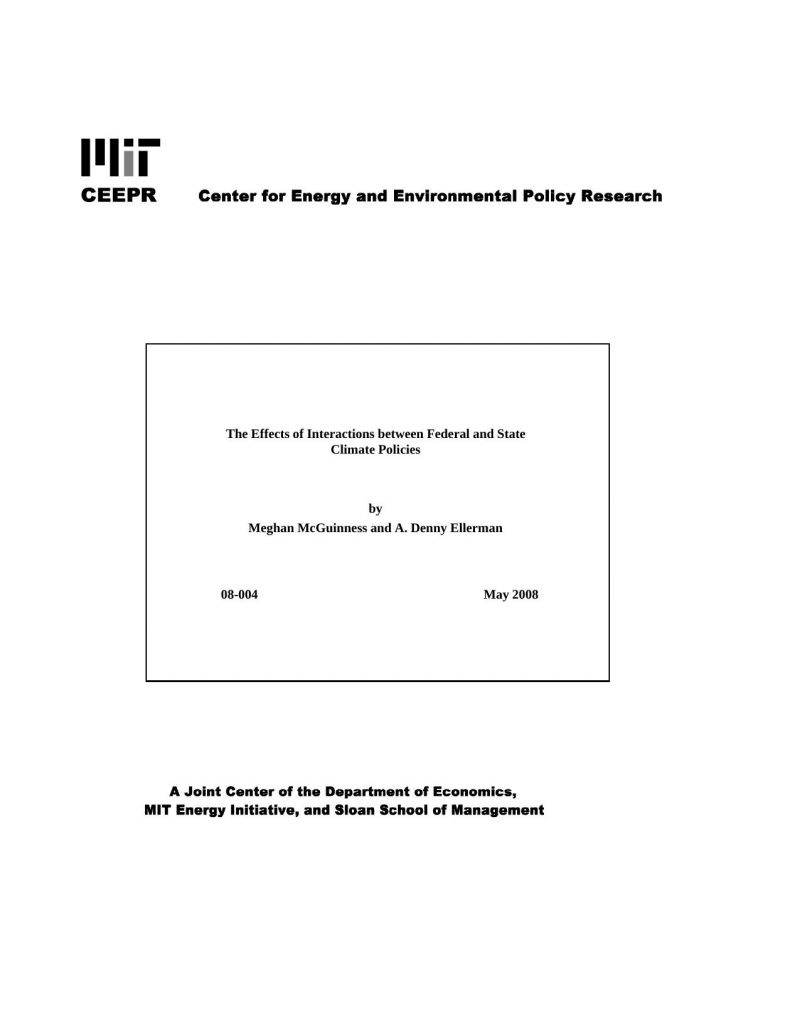The Effects of Interactions between Federal and State Climate Policies
Meghan McGuinness and A. Denny Ellerman
08-May
In the absence of a federal policy to cap carbon emissions many states are moving forward with their own initiatives, which currently range from announcements of commitments to reduce greenhouse gases to a regional multi-state cap-and-trade program slated to begin in 2009. While federal legislation is expected in the next few years, it is unclear how such legislation will define the relationship between a federal cap and trade program and other state regulations. Assuming the introduction of a cap-and-trade program at the federal level, this paper analyzes the economic and environmental impacts of the range of possible interactions between the federal program and state programs. We find that the impacts of interaction depend on relative stringency of the federal and state program and overlap in source coverage. Where state programs are both duplicative of and more demanding than the federal cap, the effect is entirely redistributive of costs and emissions, with in-state sources facing higher marginal abatement costs. Also, differing marginal abatement costs among states create economic inefficiencies that make achievement of the climate goal more costly than it need be. These redistributive effects and the associated economic inefficiency are avoided under either federal preemption of duplicative state programs or a ‘carve out’ of state programs from the federal cap with linkage to the federal allowance market.



